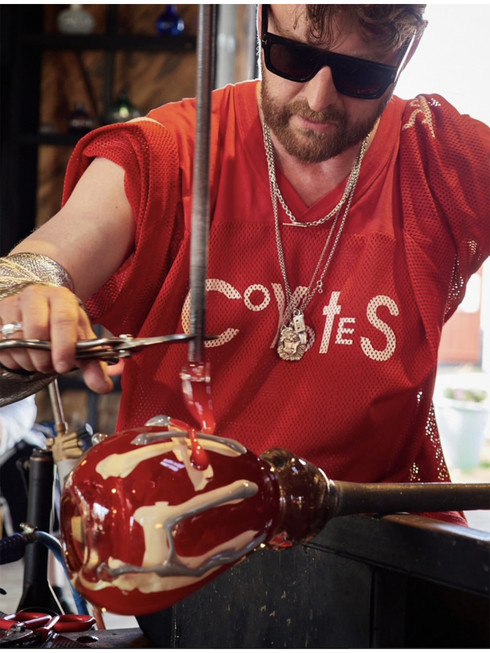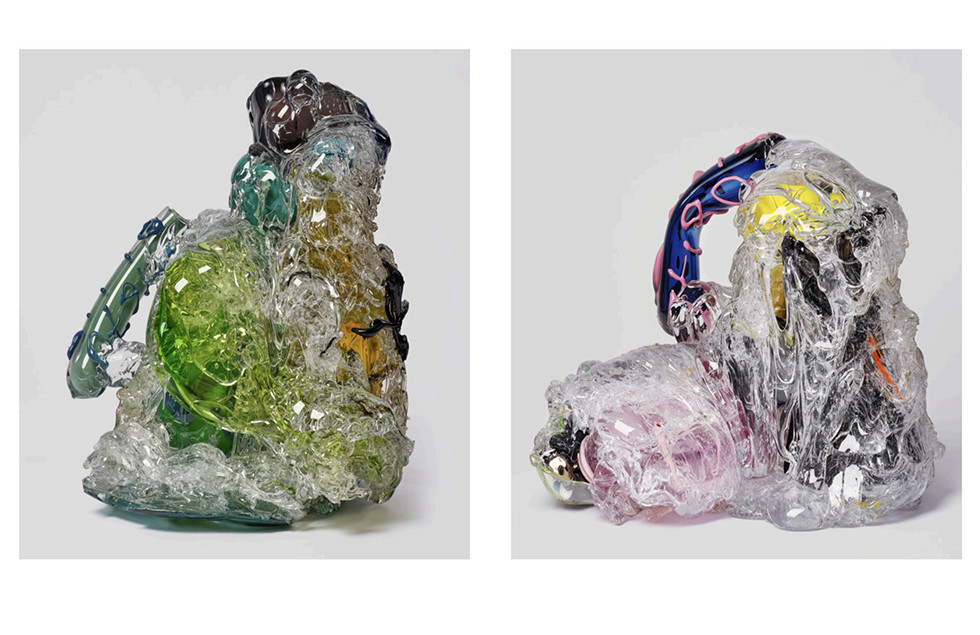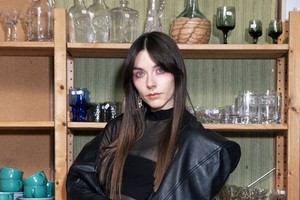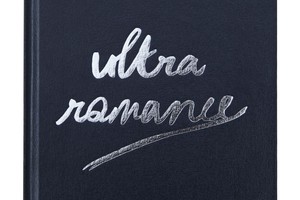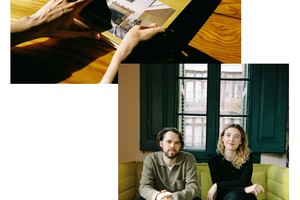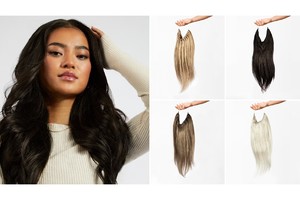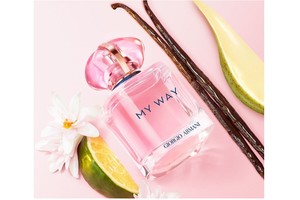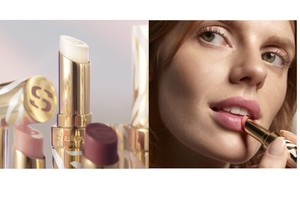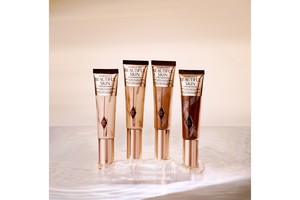An Interview with Fredrik Nielsen
Written by Josie McNeill by Josie McNeillGlass art, an industry that Sweden has been a leader in since the mid-17th century, receives a contemporary update with a new group of designers that the CFHILL gallery is calling “Generation Glas” in its new exhibit of the same title. Generation Glas is open from June 9 to August 3 and displays works from artists, such as Fredrik Nielsen, who draw from the history of glassmaking to make their own innovative works of art.
Nielsen, who is based out of Stockholm, is a glass artist with extensive schooling at Orrefors Glass School and the Royal Institute of Art in Sweden and Pilchuck Glass School in the United States. He has shown his work all over the world in galleries in New York, London, and in cities across Sweden. Now, he has four pieces—Another Excuse 2023, Furniture in the Garage, Magic in the garbage bag, and Thinking of His Lonely Room—on display and for sale at the Generation Glas exhibit.
According to Nielsen, Generation Glas comes at a time when many of the glassworks in Sweden are closing down, leaving room for glass artists to capitalize on the availability of glass to truly have the space to experiment and grow in their artform.
Can you start off by telling me how you first discovered glass art and what drew you to it?
It's a really, really long time ago but I started in ‘98, and I think I started thanks to the film My Life as a Dog. When I saw that film I sort of recognized myself as the character in the movie. Then I really was longing for that process of making glass and later, in arts schools and my school in Seattle called Pilchuck Glass School, that is where I really began.
Was glass the first medium that you used to experiment with art?
I think glass was my main and my first. Now it’s my language and I feel really bad doing anything good without glass.
Can you tell me about some of your pieces in this gallery?
Another Excuse 2023. I usually show my work how it comes, almost like it’s in transit, on a palette from rock or wood. But it’s kind of ugly to have a really dirty wood palette on display, so this is the first time I’ve covered it in stainless steel. And I think it looks really luxurious. I like the twist where the podium is almost as good as the sculpture. It’s almost like you can throw away the sculpture and use the podium. A piece’s relationship to the stand is something I work with a lot.
It’s cool how the sculpture is reflected on the podium too.
It’s almost like you can see other parts of the sculpture through that.
Is there anything specific that inspired Another Excuse 2023?
I made one of the pieces on the sculpture, the cross or the plus sign, for the first time in 2021. I was in Holland to see one of my absolute favorite artists, a German girl called Annie Imhof. She’s amazing and she works on a lot of installations. I went to the Rijksmuseum and I actually saw a silver piece that came up from the plate almost like a vase shape. And I thought “I’m really gonna try to do that.” Now you can’t really see it, but the way I work is almost like a painter, building layer on layer, cooling it down and heating it up, building, building, cooling it down, building building. It’s like a plate and it actually has some kind of vase in blue on it and my phone number on the handle. So that’s how it's built up and in the end, I just blew on transparent chalk to create the bubbles on the sides. So it's just a lot of layering.
What inspired the name of your sculpture?
I thought producing stuff is almost like an excuse and then a lot of my titles come from stuff I listen to and things I read. Music is very much important to me while I’m working and getting inspiration. You can listen to a song that you like and think the song is catchy, or you can kind of inject music like injecting heroin. Injecting music or poetry like that could be like you listen to it so much until the lyrics and the songs can go into your system. The thing you work on for that certain couple of months might reflect the title in the end. For me, it's more important that the title is not the description of the piece. It’s almost like a clue into the piece. To read Another Excuse 2023 and the year is actually in the title might lead the viewer to reflect on themself. I like the title to be more confusing than helping to try to open up something.
Do you remember what you were listening to when you were making this sculpture?
A lot of different stuff. I listened to a lot of Justice, I listened to a lot of Lou Reed, I listened to a lot of CCS. I listen to a lot of music all the time.
How long did that take for you to put together?
I've been working on it since 2021 so I guess it's a two year process. Everything that I make, the blue handle, the gold one right here, especially with making sculpture with glass, it’s so easy to make something. An hour later and it’s done. But it’s very easy to get really superficial doing that. It’s like maybe one piece works for you, but then maybe you make 25 pieces before that and then the difference with me may be that I save all the 25 f— ups and use that as actual layering, almost like paint. I like to compare it to if I’m a painter, when you see a really nice Picasso painting, a really nice Basquiat painting, a really nice Lee Krasner painting, it’s almost like 16 paintings underneath that we don’t see but that actually builds up the value of the engagement in the actual paintings.
How has your artistic vision changed since the beginning of your career?
I think what’s different is the scale. In the beginning, you feel very much making small pieces. 25 years later, you don’t feel anything making the small sculptures. You almost need to reach that volume to kind of feel alive again. It’s almost like a search and an excavation everyday.
On your website it says you are particularly inspired by graffiti and pop culture…
Yes, that's the writer that wrote about me in 2009 like I’m the poster boy of “cool rebellion” or something. Now I'm like 46. But, I mean, when I create a room for a palette, it’s almost like a space for that thing. Before, I was pretty bad at doing anything in glass, and so I painted a lot of my corridors, almost like an environment experience, in places that I show. I’m not a graffiti artist, but I like to create that space for the pieces. In the end, when you create a space like that, it’s almost unnecessary to move in the sculpture when it is as good as it is just with the numbers—that’s my phone number. I can paint elephants, I can paint sails, I can paint any flowers as good as my phone number, so it's almost like creating your own home, more or less.
Other artists that inspire you?
Annie Imhof is the main. She's one of the world’s greatest artists right now. I like a lot of painters. Like everyone I like Basquiat. Who doesn’t like Lee Krasner? I think now it’s also a special interesting time. This time with Instagram and everything, I’ve become friends with a lot of musicians and I think that inspires you even more sometimes. To be inspired by something else, poets and musicians, instead of other glass artists because we’re all friends.
What direction do you see your art going in for future projects?
Even deeper into room installations. I mean I’ve always been inspired by trying to create my own space, and I think it goes toward that but maybe the more artists there are, you are always insecure and feel naked when you show yourself. But I can feel that, more or less, I might grow up a bit from this and I might rely more on the actual objects and having a room atmosphere. It might be cleaner, or it might be more like an autopsy, but it's always some kind of situation where I like the viewer to kind of be able to reflect on themselves inside the space and feel something.
What do you think of the glass art scene around Sweden?
As you can see here, I think it’s really cooking, and I think it's actually really interesting that all the factories have gone to hell more or less. So now it’s all independence, independence, independence.
Glass is the fastest material in the world to make sculptures. It’s important for the people like myself, artists working in it, to challenge themselves, and to treat it as clay. It’s really expensive, but you need to treat it as something not as expensive. I have a painter friend in the United States that says “nothing holds color and space like glass.” And if you look at me, I don’t think like that. I just want to make another object. But a painter, they think about paint so the canvas disappears. But glass holds color and space like no other material. This is what's interesting about this material. If people understand that they can make stuff that you can’t make up. For me it's become like everything you can paint on paper, don’t do it in glass. It’s almost like the material can make stuff up for you as you go.

